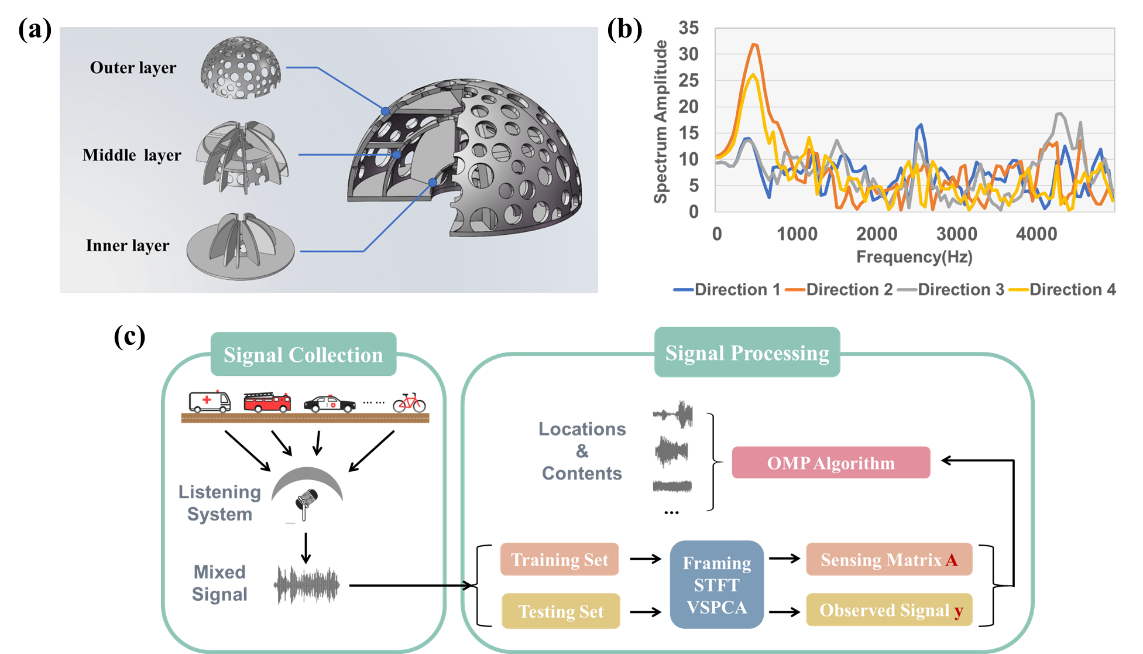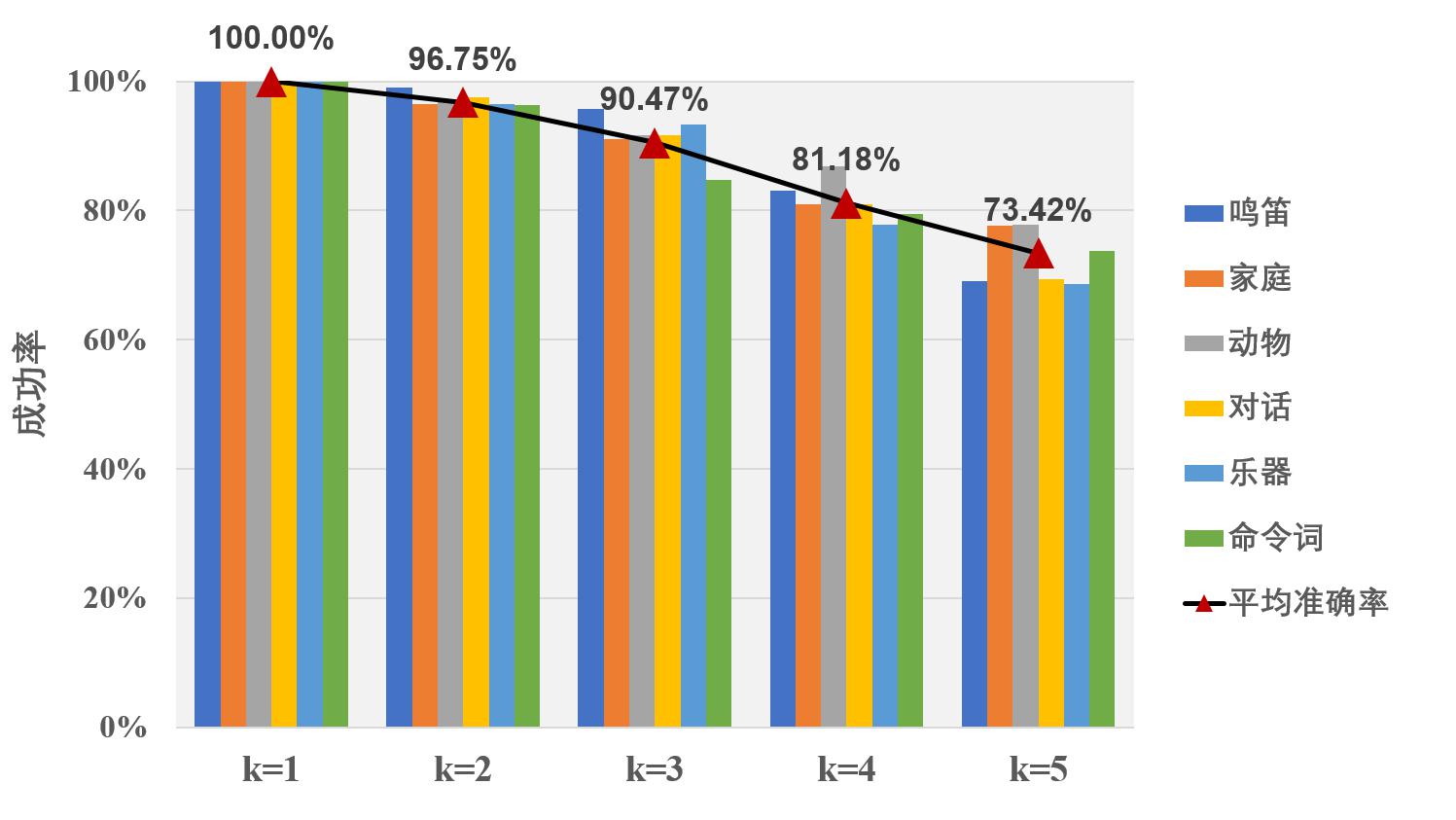In artificial systems, sound localization and separation are typically performed using no less than two microphones, known as the microphone array. However, the accuracy of the localization and separation of microphone array is fundamentally limited by the number of the microphones and the physical size of the array. Considering that such microphone arrays could be cumbersome to mount and maneuver, their utility is enormously reduced in certain situations.
Inspired by the human auditory system, researchers from the Institute of Acoustics of the Chinese Academy of Sciences (IACAS) developed a metamaterial-based single-microphone listening system (MSLS) using one single microphone and a well-designed metamaterial enclosure. The system not only realized the sound localization and separation in three-dimensional space, but also had a great real-time performance in source identification and tracking.
The relevant research results were recently published in the international academic journal Advanced Science and was selected to be featured on the inside back cover.
In the research, a 3D metamaterial enclosure (ME) was designed to provide monaural cues to the inversion task by coding sound signals as a function of the source direction. The ME could break the original omnidirectional measurement mode of the single microphone. During signal processing, the researchers used a joint algorithm of variable sparsity principal component analysis and orthogonal matching pursuit (VSPCA-OMP) to solve the multi- source listening problem, which just relied on the power or magnitude spectrum of the signal.

Figure 1. Model of the MSLS. (a) Schematic view of the 3D ME: outer layer, middle layer, and inner layer. (b) Simulated frequency responses of the ME in four different directions. (c) Schematic of data collection and processing of the MSLS (Image by IACAS)
Due to the low computational complexity and high robustness, the system not only realized the sound localization and separation, but also had a great real-time performance in source identification and tracking. They experimentally demonstrated the performance superiority of the MSLS using challenging sources in real-life scenarios.

Figure 2. The results of the listening tests (Image by IACAS)
These results promised a wide range of potential applications for the proposed system, such as intelligent scene monitoring and robot audition.
This work was supported by the National Natural Science Foundation of China (Grant No. 11874383), the Youth Innovation Promotion Association CAS (Grant No. 2017029), and the IACAS Young Elite Researcher Project (Grant No. QNYC201719).
Reference:
SUN Xuecong, JIA Han, ZHANG Zhe, YANG Yuzhen, SUN Zhaoyong, YANG Jun. Sound Localization and Separation in 3D Space Using a Single Microphone with a Metamaterial Enclosure. Advanced Science n/a, 1902271.DOI: 10.1002/advs.201902271.


